How to Link Online and Physical Stores
One of the big questions facing eCommerce businesses at the moment is how to link physical and online stores.
Until now, the primary challenge has been working out how to sell online, but the success of eCommerce has created an unexpected new retail landscape.
Written By
Dan Partridge

Two types of business have particularly benefited.
High Street retailers who have successfully migrated to eCommerce have managed to combine the best of both worlds; customers can browse their products and prices online, before heading into town to pick up the product on the same day. These businesses tend to have complex transactional systems and can cope with the administration demands that this brings.
The other beneficiary has been the small retailer whose business is now done primarily online. However, these businesses tend not to have such advanced systems for managing stock and communicating inventories. This can result in all sorts of problems when you try to simultaneously sell online and in a physical store, particularly if you have high volumes of stock.
Before we look at the best ways to link online and physical stores, it’s important to understand the kinds of business that are most in need of these types of solution.
History: The Birth of eCommerce Retail
Once upon a time, just over a decade ago, retailers took the bold step to start selling their products online. There were numerous challenges to be overcome, from designing websites and photographing inventories to writing product descriptions and developing processes to help make transactions as quick and efficient as possible. Early concerns about the security of online transactions quickly dissipated and by 2015 eCommerce transactions reached an estimated $1.5 Trillion worldwide. The eCommerce revolution radically changed the retail landscape, with a handful of companies tending to dominate the market.
Today we face an altogether different challenge. Internet-only ventures have become incredibly popular, enabling new businesses to establish themselves without the significant overheads traditionally associated with retail businesses. Many start-ups begin life as an online store, enabling their owners to gradually increase turnover within the relative security of full-time employment.
Today, anybody can start a retail business and quickly develop a significant, international customer-base. Like a modern-day American Dream, eCommerce has opened up a world of opportunity for the ambitious entrepreneurs of tomorrow. You don’t need huge resources to start a successful business; you need a good product, an online store and a lot of hard work.
Surprisingly, perhaps, the oft-quoted death of the High Street has thus far failed to materialise, despite the enormous success of eCommerce retailers. Yes, many High Streets have experienced a decline in the number of retailers as online rivals increase the competition. However, the appeal of the High Street remains as strong as ever.
The majority of customers still want to try before they buy, even if they subsequently make the purchase through an online retailer or website. There is a slightly nostalgic quality to High Street shopping that has captured the imagination of a generation of customers who have grown up with eCommerce. The greater range of information available to customers improved the High Street shopping experience, not kill it.
This is having a profound impact on the new, online retail businesses that have been birthed in the last 5 years. Whilst their origins were online, many eCommerce retailers are now looking to establish physical stores in response to demand from their customers. A physical, bricks-and-mortar High Street store is a real status symbol for a younger retailer.
We’ve also seen a huge increase in the number of pop-up shops as fledgling online retailers take their products to the High Street to connect with customers and gauge the feasibility of a physical store.
Today’s online retailers are becoming increasingly interested in having a physical store. This has exposed the limitations of traditional retail hardware and systems, creating a wave of demand for innovative solutions. Furthermore, many traditional retailers have successful embraced online retail and are now having to radically overhaul the way that they manage their business from the top down.
These are some of the questions facing retailers who need to link online and physical stores:
- How do I manage my stock inventory when I have both online and physical stores?
- What’s the easiest way to manage physical transactions, take payments, give receipts and keep track of my sales?
- What’s the most streamlined way to run a physical retail store?
- How can I let customers know which products are available in store?
Here are some of the solutions for businesses who want to link online and physical stores as seamlessly and efficiently as possible:
How to Link Online and Physical Stores
Fortunately for online retailers, eCommerce isn’t the only big technology change of the last 10 years. The introduction of smartphones and tablets has opened up a wide range of payment solutions for retailers looking to link online and physical stores. Most customers are perfectly happy to process their payment using an iPad; in fact, for many of us the novelty simply adds to the experience. It also makes it much easier for the retailer to get the customer’s email address to keep them up-to-date with news, offers and more.
There are already several apps that help customers to make payments, including Apple Pay and Google Wallet. However, we’re interested in apps that help businesses to link online and physical stores, not just facilitate payment.
Here are some of the most popular point-of-sale systems that can be used with an iPad, iPhone or equivalent:
1. Shopify POS
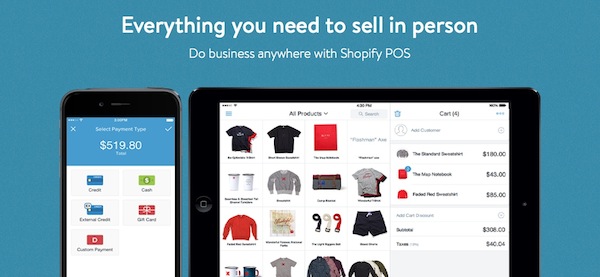
Shopify POS (‘Point of Sale’) is an app that allows the user to process transactions using an iPhone or iPad. In a nutshell, you can process transactions, print receipts, accept card and cash payments, process refunds and more. It enables online retailers to bring all the functionality of an online store to their physical store. It’s designed to be affordable and lightweight enough for retailers to take with them wherever they go. Shopify POS comes with a range of hardware accessories, including receipt printers, cash registers and credit card readers. You can also use your existing point-of-sale hardware with Shopify POS.
Why is Shopify POS so good? Well, it’s designed to give you complete control over your transactions, managing your inventory from wherever you are. If you’re already using Shopify then Shopify POS will be very familiar, with a consistent back-end system. Like all things Shopify, it’s completely scaleable, allowing you to simultaneously run separate POS systems in different locations.
Oh, and you can now get a free 14 day trial.
You do, however, need to be using Shopify in order to benefit from Shopify POS. Whilst we strongly recommend Shopify as our eCommerce platform of choice, there are several other alternative systems on the market…
2. Vend HQ
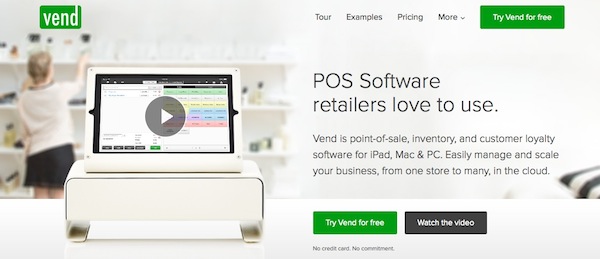
Much like Shopify POS, Vend HQ is a point-of-sale solution for businesses looking to link online and physical stores. The features are almost identical to Shopify, although you would need to export your product inventory and customer database via an Excel spreadsheet, which isn’t the easiest of jobs for the tech-averse. It also has a slightly higher monthly subscription than Shopify, although with a 30-day free trial you might be tempted to have an in-depth look at Vend HQ and see if it works for you.
We really like the look of Vend HQ – it’s beautifully presented, and they’ve clearly done their homework. Their FAQ page, for example, is evidence that they really take customer service seriously. Having high-quality support when you need it most is so important.
3. Phone Swipe
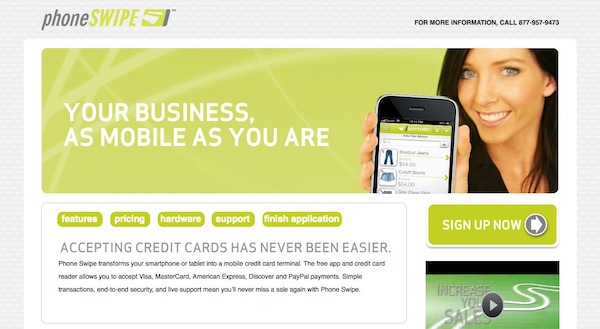
Phone Swipe gives retailers the ability to process credit card transactions from their iPad, iPhone or Android phone. Much like Shopify POS, you can synchronise it with your inventory to help monitor stock levels, and it’s quick and easy to send receipts to customers.
However, Phone Swipe is currently only available in the US, with no indication of when it will be launched internationally. It doesn’t appear to have the range of hardware that Shopify POS offers, meaning that you can only process card payments, not cash. Whilst physical receipts are expected to become less common as we move towards a more eco-friendly paper free system, the greater range of options provided by the likes of Shopify POS and Vend HQ mean that it’s currently a more accomplished product.
4. Intuit Quickbooks Mobile
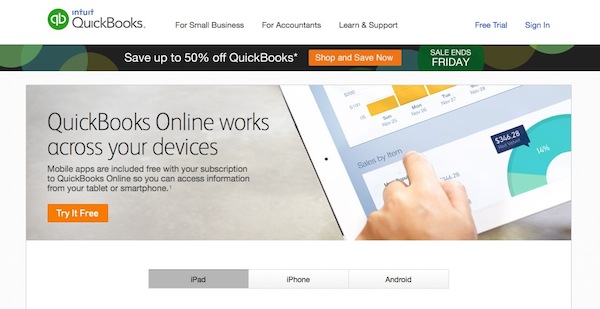
Intuit Quickbooks Mobile is a free card reader and app for iPhone, iPad and Android. There is no monthly charge; you only pay for the transactions that you actually complete, with a typical charge of $0.25. There are several neat touches, including the option to photograph a customer’s credit card in order to enter the details, making the transaction as quick and easy as possible.
Intuit Quickbooks Mobile is a very attractive option for smaller retailers who don’t require the more complex inventory management functionality offered by Shopify POS and simply want to complete transactions quickly and easily.
5. Zettle by PayPal
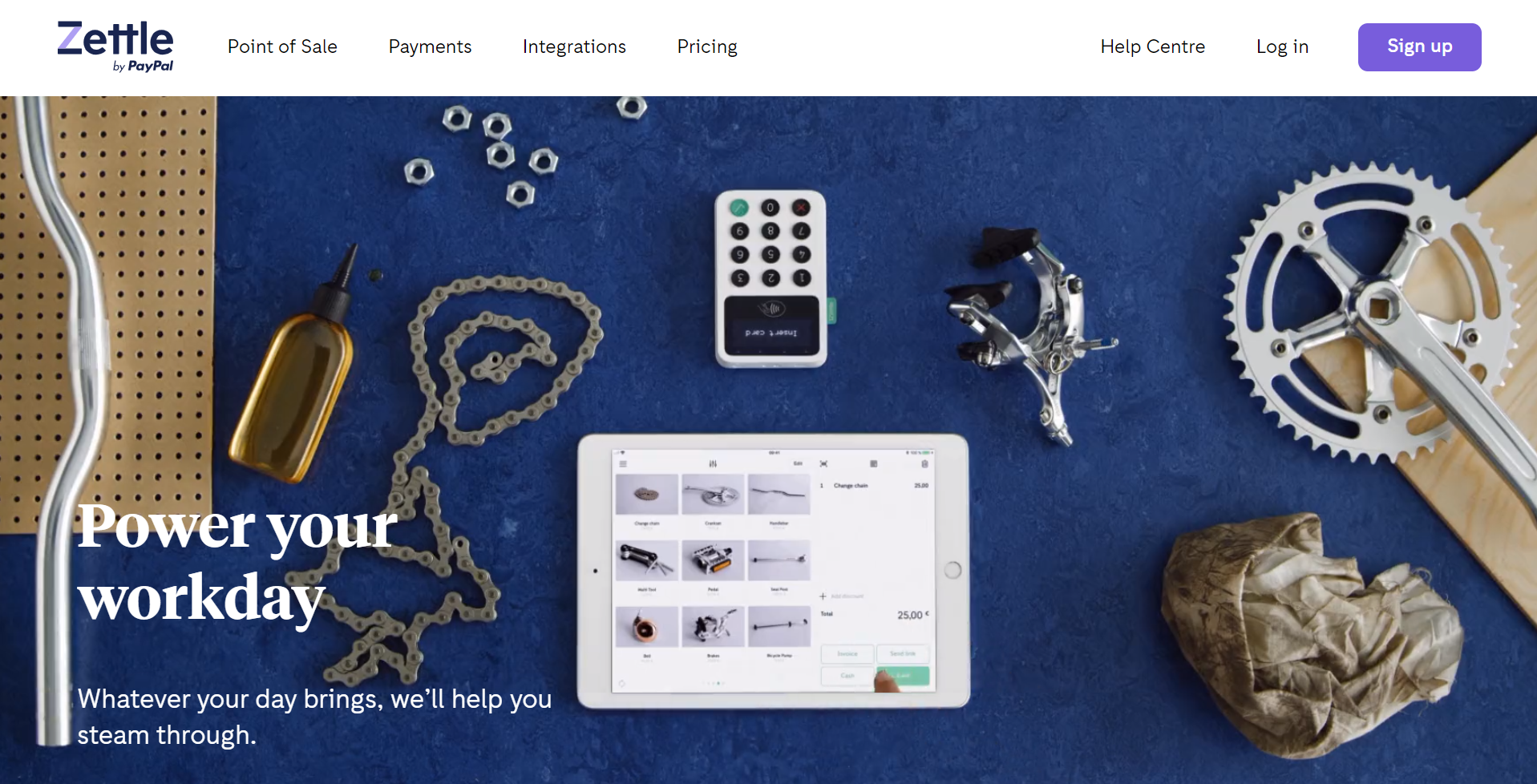
Zettle by PayPal was an early leader in the mobile payment market. Their point-of-sale card and cash payment system is simple, free and has received good reviews from users. With no monthly fees and a “smart fee” that reduces with higher numbers of transactions, it’s an excellent option for startups who don’t want to over-commit.
However, unlike Shopify POS you have to manually enter your inventory to the Zettle by PayPal system. Once you’ve done this you will get a great range of metrics and statistics, all presented in an attractive and intuitive interface.
If you have a relatively small inventory of stock and don’t need a minute-by-minute update on stock levels, Zettle by PayPal might be the solution for you. If you’re currently writing hand-written receipts, for example, Zettle by PayPal is a great way to improve the quality of your transactions with minimum hassle.
6. AirPOS
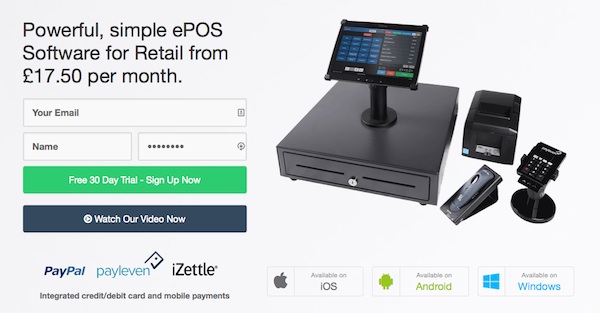
AirPOS is a very similar service to Shopify POS, offering a wide range of features and hardware. As you’d expect, it has excellent security features and will continue working even when you haven’t got a wireless or mobile connection. It can be used with iPhone, iPad and Android. AirPOS also give you the ability to get a store up and running in a matter of minutes.
However, AirPOS is realistically only going to be of interest if you haven’t yet got an eCommerce store, which isn’t really what we’re looking for at this point. We also think that it looks like a slightly lightweight version of Shopify, lacking the user base and expert resources that come with 100,000+ users.
How Will We Link Online and Physical Stores in the Future?
We’re really excited about the way that eCommerce is developing. Remarkably, it’s helping to make retail even more personable, bringing a greater variety and accessibility to small retailers than ever before. At the moment, the big challenge is to link online and physical stores with mobile point-of-sale and inventory systems. We’re particularly impressed by Shopify POS, Vend HQ and Zettle by PayPal, which all offer good value payment systems and access to that all-important sales data to help you reach more customers.
We’ve looked in detail at the options available to online retailers who want to sell their products from a physical store. However, there are various challenges that remain to be solved.
What if, for example, you are shopping on your local High Street and want to buy a pair of black jeans.
Traditionally you would have had to walk in and out of every store until you found the product that you were looking for.
Today you can pull out your smartphone to find the nearest clothes shops. You can search individual retailers to check their prices and see if they’ve got the right product and size in stock. You can even complete the transaction online and collect the product in-store, helping to avoid the Saturday-afternoon queues.
What you can’t do is search all of the retailers on the High Street to compare all of the black jeans that are available in your size.
Until now.
bnkle is an innovative app that gives users an overview of all the products that are available in their geographical location, along with price and style. In other words, if you’re shopping on the High Street you’ll be able to make informed decisions before you even enter the store, without having to trawl through the individual eCommerce websites of all the retailers.
The premise is very simple. Essentially, retailers install the bnkle app which shares their current inventory and prices with users. It’s cross-platform compatible and really easy to use.
Currently only available in the US, bnkle is currently being rolled out in the UK. However, we like the idea and think that this could provide some insight into the future of eCommerce, particularly with the overlap with the High Street. This looks like an exciting next step in terms of trying to link physical and online stores, helping customers to make informed choices about their shopping.
These are very exciting times for online retailers and customers alike, with loads of great apps currently on the market.
If you’d like to link online and physical stores or want to work out how this might look for your eCommerce business then please don’t hesitate to get in touch.

